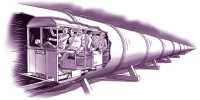Quantum computers use quantum bits, or qubits, to perform calculations that are orders of magnitude faster than classical computers. They have the potential to transform industries such as cryptography, drug discovery, optimization, and simulation. Companies and research institutions all over the world are hard at work developing and improving quantum computers.
Every day, we interact with bits and bytes, whether by sending a text message or receiving an email. There are also quantum bits, or qubits, which differ significantly from ordinary bits and bytes. These photons, or light particles, can carry quantum information and provide exceptional capabilities that cannot be obtained in any other way.
Qubit behavior exists in the realm of quantum mechanics, as opposed to binary computing, where bits can only represent a 0 or 1. A qubit can represent a 0 or a 1 by “super-positioning,” or any proportion between the two. When compared to today’s computers, this greatly increases the processing speed of a quantum computer.
We discovered that a quantum dot emitter – or a nanometer-scale dipole antenna – traps a large amount of energy by performing rigorous analysis. A dipole emitter’s outer regime operation is well understood, but this is the first time a dipole has been studied on the inside.
Koo Kim
“Learning about the capabilities of qubits has been a driving force for the emerging field of quantum technologies, opening up new and unexplored applications like quantum communication, computing, and sensing,” Hong Koo Kim, Professor of Electrical and Computer Engineering at the University of Pittsburgh Swanson School of Engineering, said.
Quantum technologies are important in a variety of fields, such as providing banks with the speed needed to protect financial information or providing researchers with the speed needed to mimic all aspects of chemistry. And, thanks to quantum “entanglement,” qubits could “communicate” as a single system across vast distances. Kim and his graduate student, Yu Shi, made a discovery that could propel quantum technology forward.

It begins with a single photon
Photon-based quantum technologies rely on single photon sources that can emit individual photons. These single photons can be created using nanometer-scale semiconductors, also known as quantum dots. A quantum dot functions as a light-emitting antenna, similar to how microwave antennas broadcast mobile phone signals.
“We discovered that a quantum dot emitter – or a nanometer scale dipole antenna – traps a large amount of energy by performing rigorous analysis,” Kim explained. “A dipole emitter’s outer regime operation is well understood, but this is the first time a dipole has been studied on the inside.”
Individual photons from those quantum dots have handedness, just like us, and quantum information is carried by this handedness of individual photons. As a result, sorting them into different pathways is a critical task in quantum information processing. Kim’s team has created a new method for separating differently-handed photons and efficiently harvesting them for future processing.
“This work’s findings are expected to contribute to the development of high-speed single photon sources, a critical component required in quantum photonics,” Kim said.
















